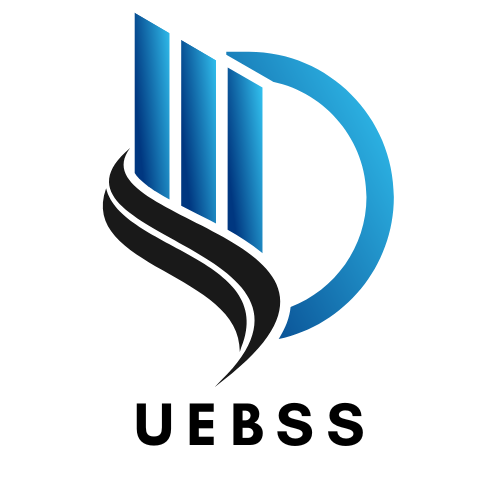Distributed Data Lake Architectures for Cloud-Based Big Data Integration
Abstract
The proliferation of Big Data across sectors such as healthcare and higher education has highlighted the need for scalable, efficient data storage and integration solutions. Data lakes, which allow the storage of structured and unstructured data in its native format, have emerged as a powerful model for handling diverse data sources in cloud environments. This paper examines distributed data lake architectures specifically designed to support cloud-based Big Data integration, with a focus on creating an infrastructure that enables seamless data ingestion, storage, and retrieval across multiple sources. The proposed architecture leverages cloud-native tools such as Amazon S3, Azure Data Lake, and Google Cloud Storage, as well as distributed processing frameworks like Apache Spark and Apache Hadoop, to provide an efficient and scalable solution for storing and analyzing vast datasets.
A key advantage of distributed data lake architectures is their ability to handle heterogeneous data from various sources, including databases, Internet of Things (IoT) sensors, social media, and transaction logs. In sectors like healthcare, where data is generated from EHR systems, patient monitoring devices, and diagnostic imaging, and in higher education, where data comes from student information systems, learning management platforms, and research databases, integrating and analyzing this data is critical. The proposed architecture enables these institutions to consolidate data from multiple silos into a unified, cloud-based repository, allowing for advanced analytics that can enhance decision-making, improve operational efficiency, and support innovative research. By storing data in a distributed architecture on the cloud, organizations can eliminate data redundancy, improve accessibility, and reduce storage costs, while also enabling real-time insights through parallel processing capabilities.
The paper details the structure of a distributed data lake architecture, focusing on four key components: data ingestion, storage, metadata management, and data processing. The data ingestion layer supports real-time and batch processing, allowing for flexible data integration from various sources. Using cloud-native tools like AWS Glue and Azure Data Factory, the system automates data ingestion pipelines, enabling efficient data extraction, transformation, and loading (ETL) processes. The storage layer relies on distributed, scalable storage systems such as Amazon S3 and Azure Blob Storage, which provide robust security, data durability, and cost-effectiveness. Additionally, the storage layer is designed to handle both raw and processed data, ensuring data quality and accessibility for analytics and reporting needs.
Metadata management is essential in distributed data lake architectures, as it enables users to locate and understand the data within the lake. The paper proposes using cataloging tools like AWS Glue Data Catalog and Azure Data Catalog to manage metadata, facilitating data discovery and governance. Metadata management also plays a critical role in ensuring data consistency, integrity, and compliance with regulatory standards such as HIPAA in healthcare and FERPA in higher education. The metadata layer integrates with access control mechanisms to ensure that sensitive information remains secure and accessible only to authorized users. This is particularly important in healthcare, where patient confidentiality is paramount, and in higher education, where protecting student data is essential.
The data processing layer enables advanced analytics by integrating distributed computing frameworks like Apache Spark and Hadoop. These tools provide the necessary computational power to perform large-scale data analytics, supporting applications such as predictive analytics, machine learning, and real-time data processing. For example, in healthcare, predictive analytics can analyze patient data to identify individuals at risk of developing chronic conditions, while in higher education, machine learning algorithms can analyze student data to predict academic performance and support retention initiatives. The distributed nature of the architecture allows for parallel processing, which reduces processing time and enables real-time insights, making it well-suited for time-sensitive applications in both fields.
A pilot study was conducted to evaluate the performance and scalability of the proposed distributed data lake architecture in a healthcare and higher education environment. In the healthcare case study, the architecture enabled the integration of patient records, imaging data, and sensor data from monitoring devices, resulting in a unified data platform that improved patient outcomes through better diagnostics and treatment planning. In the higher education case study, the architecture supported the integration of academic performance data, engagement metrics from learning platforms, and demographic information, facilitating more personalized learning experiences and data-driven decision-making for administrators. In both cases, the architecture demonstrated its ability to handle large-scale data integration and analytics, while also ensuring data security and compliance with regulatory standards.
One of the main challenges in implementing distributed data lake architectures is ensuring data governance, quality, and security across diverse data sources. To address these challenges, the paper outlines best practices for data governance, including implementing role-based access control, data encryption, and regular data quality checks. These measures ensure that the data lake remains a reliable source of accurate, secure, and high-quality data, supporting trustworthy analytics. Additionally, the paper discusses strategies for cost optimization, such as using tiered storage solutions and automated data archiving, which help organizations manage costs while maintaining data availability for analytics.
In conclusion, distributed data lake architectures represent a robust solution for cloud-based Big Data integration, enabling organizations in healthcare, higher education, and other sectors to consolidate, manage, and analyze large volumes of diverse data efficiently. By leveraging the flexibility and scalability of cloud infrastructure and advanced data processing frameworks, this architecture supports comprehensive analytics that can drive better decision-making and operational efficiency. Future research will focus on enhancing the predictive capabilities of these data lakes through artificial intelligence and machine learning, as well as exploring the integration of additional data sources, such as genomics in healthcare or social media interactions in higher education, to further enrich the insights derived from Big Data integration.





